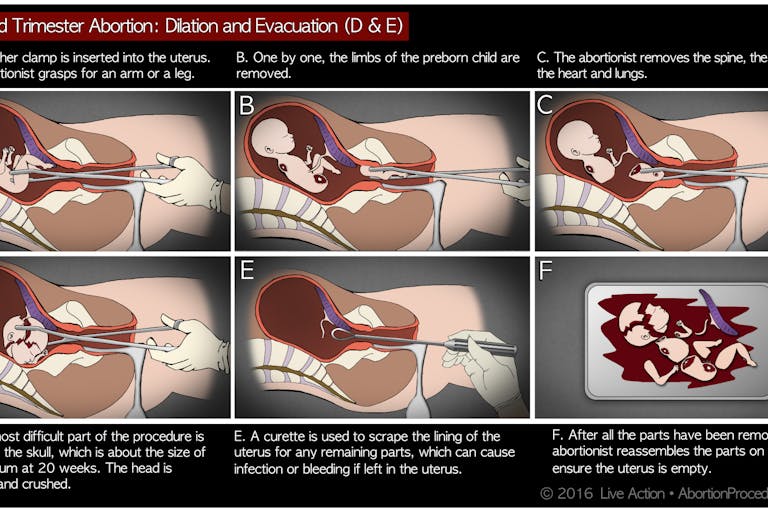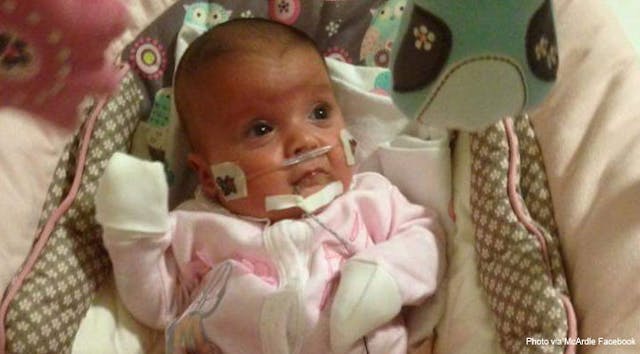
Decades after banning the death penalty, Canada kills inmates by 'assisted suicide'
Nancy Flanders
·
Witness to late term abortion: ‘First came an arm, perfectly formed, a tiny, baby’s hand, fingers curled’
British author Mary Kenny witnessed abortions while doing research for her book, “Abortion: The Whole Story.” She describes going to one facility that specialized in late-term abortions.
The first thing that struck Kenny when she entered the facility was the nonchalance and casual attitude of the abortionists as they stood around and chatted about sports:
The atmosphere in the operating theatre was clean, busy and professional. Several young male doctors, gowned for the [operating room], were standing around when I entered, talking cheerfully about the cricket score. There was no hint, here, of life-and-death drama – it was just another day, another hospital [operating] session.
There was a casual attitude among the abortionists – it was just another day at work for them. They showed no emotions about the killing they would soon be taking part in. In a short while, they would begin tearing apart little human beings, but their attitudes were so casual that they might as well have been starting work at a fast food restaurant. They were hardened to their grisly work.
The first abortion Kenny witnessed took place at 14 weeks. She says:
When the uterus was evacuated into the small bowl under the operating table, the contents were again examined. Here the remains of a very small body, about the size of a newborn kitten, could be seen. It is tiny indeed, but its form is unmistakable.
By 14 weeks, every body system and organ of the baby is present. The preborn baby has had a heartbeat and brainwaves for weeks, is fully formed, and is already right- or left-handed. If the baby is a girl, she has ovaries and a uterus of her own The baby can hiccup, react to touch, and breathe amniotic fluid, in practice for breathing oxygen outside her mother’s womb. Her kidneys are producing urine. The baby can suck his thumb and yawn, and he or she has unique fingerprints different from those of every person who has ever lived.
Kenny then writes about witnessing an 18-week-old preborn baby being pulled from the womb piece by piece in a D&E abortion. In this type of abortion, the woman’s cervix (neck of the womb) is opened with sticks called laminaria. The baby is then torn apart with forceps and pulled out piece by piece. Former abortionist Dr. Anthony Levatino describes this type of abortion in the video below.

The last abortion Kenny witnessed was committed on a baby at 22 weeks. According to a May 2015 medical study published in the New England Journal of Medicine, roughly 25% of babies born at 22 weeks gestation would survive if “actively treated in a hospital.” Thirty-three percent of premature babies born just a week later, at 23 weeks, survive. This article shares the stories of multiple babies who survived after being born at very premature ages.
Baby Meabh Mcardle, born at 23 weeks, Photo via Facebook.

Kenny describes what she witnessed happen to the 22-week-old baby:
The procedure began. About half a litre of amniotic fluid flowed from the woman’s body as the dilators were inserted. The cord was extracted – the last lifeline of the foetus. Dr. Paintin did this abortion. The forceps went into the uterus, quite roughly this time. Fluid and blood continued to fall into the bowl underneath the table. After some vigorous action he started to extract the foetus. First came an arm, perfectly formed, a tiny, baby’s hand, fingers curled. A limb was extracted. Then two limbs lay in the bowl. Dr. Paintin worked away and pieces of the trunk emerged. The intestines, brain tissue, liver, lung, came away. Last of all – the most difficult part – was the cranium. The skin was torn, and there was not much more than a skull. After all the parts had come away, the suction was inserted, and the uterus cleanly evacuated.
Yet the abortion workers had no reaction to the horror they were committing:
The men did not seem to mind doing the abortions and showed no signs of distress. … Overall, there was a very perceptible atmosphere of relief that the day’s work was done. The sense of relief was so strong that Dr. Paintin and I talked light-heartedly, gossiped a little, made a joke.
After dismembering a living, fully developed preborn baby, the abortionist joked and gossiped with Kenny. He was completely callous towards the preborn baby he had just dismembered. He gave the abortion no thought and showed not the slightest bit of guilt or sadness.
Abortionists like Paintin have hearts so hardened that they can dismember a fully formed baby and yet feel no remorse. This illustrates how abortion leads to the devaluation of human life.
Source: Mary Kenny, “Abortion: The Whole Story,” (London: Quartet Books, 1986) 154, 156, 158-159.
Live Action News is pro-life news and commentary from a pro-life perspective.
Contact editor@liveaction.org for questions, corrections, or if you are seeking permission to reprint any Live Action News content.
Guest Articles: To submit a guest article to Live Action News, email editor@liveaction.org with an attached Word document of 800-1000 words. Please also attach any photos relevant to your submission if applicable. If your submission is accepted for publication, you will be notified within three weeks. Guest articles are not compensated (see our Open License Agreement). Thank you for your interest in Live Action News!

Nancy Flanders
·
International
Bridget Sielicki
·
Human Rights
Angeline Tan
·
Politics
Nancy Flanders
·
Human Rights
Angeline Tan
·
Human Rights
Bridget Sielicki
·
Guest Column
Sarah Terzo
·
Abortion Pill
Sarah Terzo
·
Guest Column
Sarah Terzo
·
Guest Column
Sarah Terzo
·
Guest Column
Sarah Terzo
·